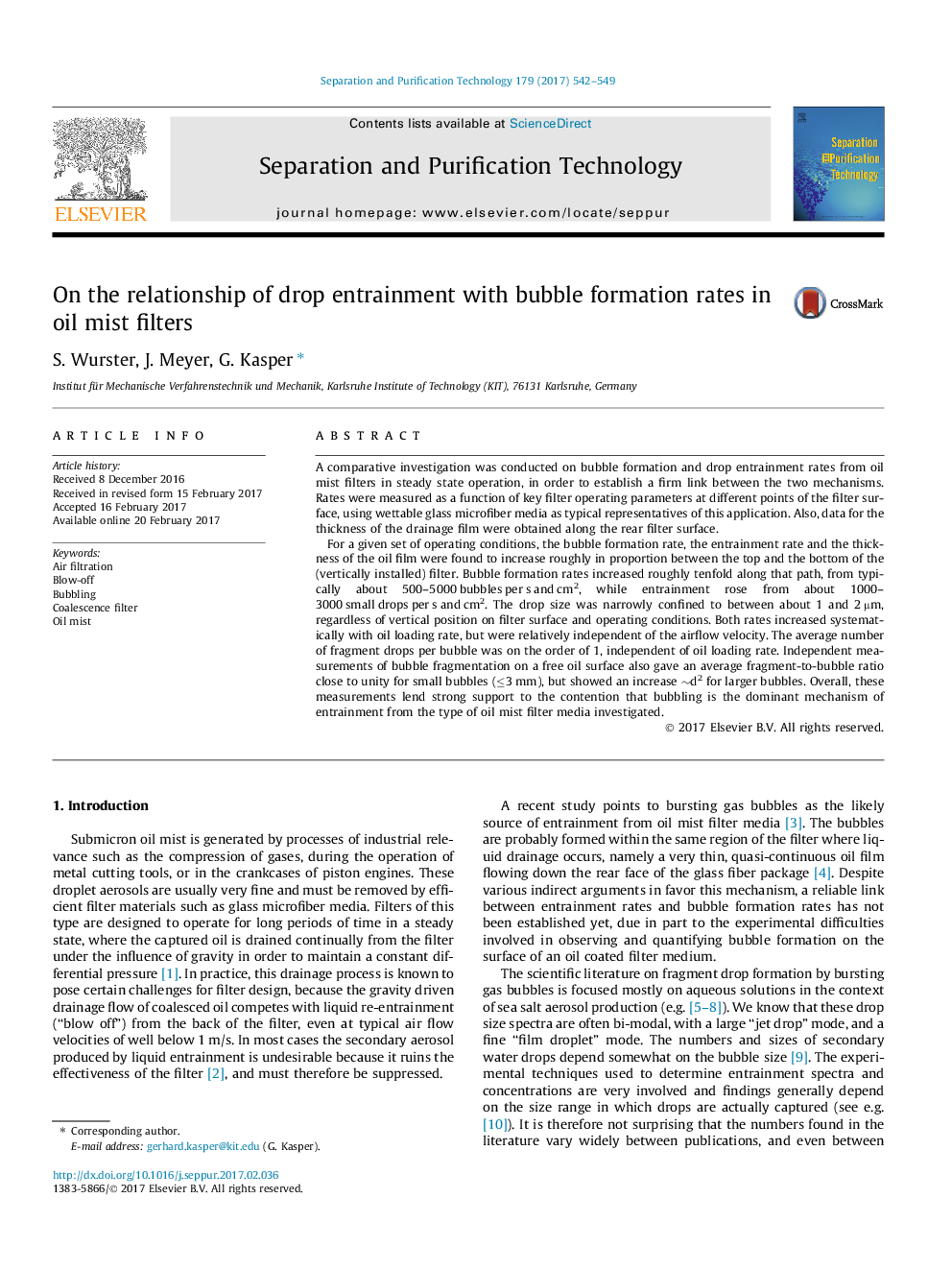| Article ID | Journal | Published Year | Pages | File Type |
|---|---|---|---|---|
| 4990110 | Separation and Purification Technology | 2017 | 8 Pages |
Abstract
For a given set of operating conditions, the bubble formation rate, the entrainment rate and the thickness of the oil film were found to increase roughly in proportion between the top and the bottom of the (vertically installed) filter. Bubble formation rates increased roughly tenfold along that path, from typically about 500-5000 bubbles per s and cm2, while entrainment rose from about 1000-3000 small drops per s and cm2. The drop size was narrowly confined to between about 1 and 2 µm, regardless of vertical position on filter surface and operating conditions. Both rates increased systematically with oil loading rate, but were relatively independent of the airflow velocity. The average number of fragment drops per bubble was on the order of 1, independent of oil loading rate. Independent measurements of bubble fragmentation on a free oil surface also gave an average fragment-to-bubble ratio close to unity for small bubbles (â¤3 mm), but showed an increase â¼d2 for larger bubbles. Overall, these measurements lend strong support to the contention that bubbling is the dominant mechanism of entrainment from the type of oil mist filter media investigated.
Related Topics
Physical Sciences and Engineering
Chemical Engineering
Filtration and Separation
Authors
S. Wurster, J. Meyer, G. Kasper,
